Meredith Allard's Blog, page 36
November 7, 2013
NaNoWriMo Update #1
Tomorrow is the end of Week 1 of NaNoWriMo, and I have more than 10,000 words logged in. As I finished my writing for today, I realized that I don’t know if I’ll meet the challenge. It’s not because I won’t have 50,000 words completed. It’s because as of right now I don’t think the story will be complete at that length. I’m already at more than 10,000 words and I’m only on Chapter 6.
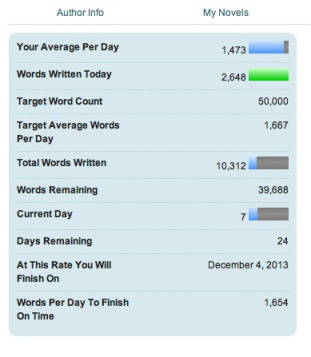
Here’s my NaNoWriMo chart from 11/7/13. It says I’ll finish on December 4, but I’ll get ‘er done by November 30th! Oh, and I didn’t really write more than 2000 words today. That’s a combination of today’s and yesterday’s work.
I can’t say exactly how long I expect the story to be. One of my favorite movies is Amadeus, and one of my favorite scenes is where the hoity-toity Emperor tells Mozart his opera has too many notes and he should cut a few and it will be perfect, to which Mozart, in one of my favorite smart-ass comebacks of all time, asks, “Which few did you have in mind, Majesty?” Mozart goes on to explain that he uses exactly as many notes as he needs, no more and no less. That’s how I feel about writing my stories. I use exactly as many words as I need—no more and no less. The result is that my novels aren’t any certain length. Woman of Stones turned out to be a novella at 35,000 words. Victory Garden is in the 60,000s, and the books in the Loving Husband Trilogy are in the 80,000 range. I certainly won’t consider it a waste if I hit the 50,000 word mark on November 30 (you’ll see!) and That You Are Here isn’t finished. I’ll simply continue the discipline I’m learning through NaNoWriMo and at this rate I should have it done by the middle of December.
While I go back to writing a bit more tonight (it’s six p.m. here in Vegas and I still have some brain power), I’m reposting an article about writing historical fiction. Enjoy.
Filed under: News, Tidbits, Writing Tagged: NaNoWriMo, National Novel Writing Month

November 1, 2013
NaNoWriMo Anyone?
 I’m participating in National Novel Writing Month (affectionately known as NaNoWriMo) for the first time this year. Starting today, November 1, I’m joining thousands of other authors in the race to write a 50,000 word novel in 30 days. I figured that’s about 1700 words a day, but since I usually take Sundays off, I’ll need to do double-time on Saturdays or an extra 300 words the other days of the week.
I’m participating in National Novel Writing Month (affectionately known as NaNoWriMo) for the first time this year. Starting today, November 1, I’m joining thousands of other authors in the race to write a 50,000 word novel in 30 days. I figured that’s about 1700 words a day, but since I usually take Sundays off, I’ll need to do double-time on Saturdays or an extra 300 words the other days of the week.
Here is the 100% Awesome 100% Thorough Guide to NaNoWriMo 2013, and reading it got me pumped and ready to go. Last night I saw a pep talk from the many-times best-selling author James Patterson on the NaNoWriMo site, which is pretty cool. Patterson said maybe it’s not as crazy as it seems—writing a complete novel in 30 days. It’s going to be a challenge, I know, but this is the first time I’ve been open enough this time of year to participate so I’m ready to give it a try. For the past four years, I’ve been knee-deep writing the Loving Husband Trilogy so NaNoWriMo was a no-go for me. This year, the Loving Husband Trilogy happily out in the world, I have an idea for a novel entitled That You Are Here (title courtesy of Leaves of Grass by Uncle Walt Whitman) that I have (most of) a plot for, characters I want to spend time with, some dialogue here and there, and a general outline, so I’m ready to plunge into the 50,000 word challenge. What kind of story is That You Are Here? It’s a love story, basically. I think everything I write ends up being a love story in one way or another. It’s set in the present day, and though I meant to keep history out of it, you know me, and history is going to end up weaved into the story somehow. Even I’m not quite sure how at this point, but I’ll need to squeeze some historical research into my writing time. No vampires or witches this time around.
I’m finishing my writing for this afternoon (I’m ending at 1652 words, not too shabby!), and I’m realizing that 1700 words a day isn’t that much since I usually write 1500 words a day when I’m working on a first draft. Another few hundred words is nothing, right?
To give myself the time I need to get the novel finished by November 30, I’ll be reposting some of the more popular posts I’ve had here. Occasionally, I’ll post short updates on how I’m doing with the challenge, and you can watch me keep track of my progress on the NaNoWriMo widget on the right sidebar here.
I’m not looking at this as overwhelming. This should be fun. I’m excited to see where I am on November 30. I’m going to work to meet the deadline, but I’m not going to fret about it. If I write 1000 words one day instead of 1700, I’m pretty sure the sky won’t fall in. This is simply giving me the push I needed to jump into a story I’ve wanted to tell for a while now. If you want to participate, it’s not too late. Sign up on the NaNoWriMo website and let your fingers do the talking.
Happy NaNoWriMo everyone!
Filed under: News, Tidbits, Writing Tagged: NaNoWriMo, National Novel Writing Month, writing

October 23, 2013
What I Did and What I Didn’t–Author Platforms or Discoverability?
I know I’m vertically challenged at 5’1, but do I really need a platform?
According to this article from Writer’s Digest, a writer’s platform isn’t something to stand on at all, but rather refers to your ability to sell books through who you are, the personal and professional connections you have, and media outlets. If you’re an author today, you know perfectly well what author platform means, and if you’re anything like me you’ve been scratching your head about how to most effectively create one.
For some time now I’ve wondered what my platform is, or, more accurately, if I even have one. In 2011, when I began reading about book marketing, the general opinion was that an author platform was built on an altar of expertise. “Have a specialty” or “Become an expert” was the battle cry. It sounds simple enough, but become an expert in what? Underwater basket weaving? Chinese silk embroidery? Occasionally, I pretend to know a thing or two about writing, but writing is like blogging—there are no experts. Some people may be expert in forming and sharing their opinions about writing, but that’s all they are—opinions. When I’m writing about writing, I’m sharing my experiences and observations, that’s all. I’m not privy to any code that will unlock the secrets of the creative universe, and neither is anyone else. The hardest part of teaching writing or writing about writing is knowing that each writer has to find his or her own way. We can gather tips and quips from as many writers as we like, but at the end of the day it’s up to us to sit our bottoms in the chair and put our fingers to the keyboard (or pen) and figure out how we want to string words together.
Historical fiction is what I’m most known for, and I’ve been the executive editor of The Copperfield Review, a literary journal for readers and writers of historical fiction, for 13 years now, so any platform I have would include historical fiction, right? But even that never felt entirely right because I don’t write in one genre. My first three novels fell neatly into the historical fiction category (with different subcategories), but the Loving Husband Trilogy is harder to place. It has an historical fiction aspect with the background of the Salem Witch Trials in 1692, but there’s the modern story in present-day Salem too. The vampires and witches mean that the Loving Husband Trilogy is most commonly categorized as paranormal, though many of James and Sarah’s biggest fans are those who start their reviews with “I’m not usually into vampire books but…” The novel I’m currently working on is completely present day and so off-topic from any other story I’ve written that even I can’t believe I’m writing it. Does that mean my platform goes away and no one will know who I am anymore? Will I have to wear a “Hello, my name is…” tag while I’m writing?
Recently, I saw this article from Dan Blank about one of the newer buzzwords in book marketing: discoverability. Discoverability means that readers can find your books. Blank argues that focusing on book discoverability is incorrect; instead, the focus should be on reader discoverability since readers are the ones who might buy your book if they know about it. Whether you call it book discoverability, author discoverability, or reader discoverability, I like the idea of discoverability better than author platforms, and I’m not the only one. I’ve read comments from other authors who balk at the idea of platforms, not from a fear of heights, but from the knowledge that there are only so many hours in the day, and if we’re writers then don’t we need time to write? How much time do we need to put into establishing ourselves as experts, and at what point are we considered experts anyway? The thought of building an author platform intimidated me, and though I plugged away at creating a social media presence, I was never sure how successful I was at building a platform. Eventually I gave up on the idea of building an author platform because I realized I was spending all my time reading about platforms and not getting any writing done.
For me, there’s less pressure with the idea of discoverability. Maybe it’s a matter of semantics, the difference between author platform and discoverability. Maybe they really are the same thing but for whatever reason discoverability is a friendlier sounding word to me. I don’t have to shout from the highest mountain top to proclaim myself an expert. I don’t have to worry about staying on message or selecting a specialty. I don’t have to limit my platform to historical fiction. I need to be discoverable, and I’ve been working toward that, little by little, one step at a time. I’m no longer concerned about building a platform. I’m making myself, and my books, discoverable by putting us out there whenever, however I can.
I’m here! Did you know that? Now you do.
Filed under: Publishing, Writing Tagged: author platforms, book discoverability, book marketing, Indie Authors, indie publishing

October 14, 2013
Boo! It’s the Spooktacular Giveaway Hop!
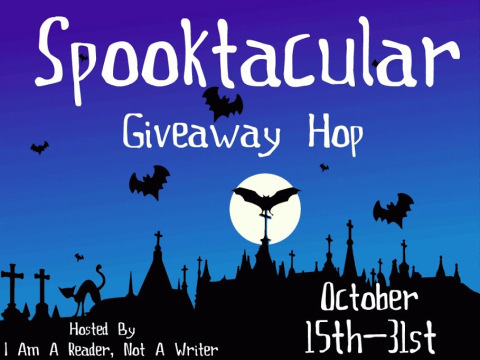
Hard to believe it’s time for the Spooktacular Giveaway Hop again. This is always one of my favorite events of the year. After all, there’s no better time for the Loving Husband Trilogy–a vampire/witch/werewolf story–than Halloween. There are more than 300 blogs participating, which means there are many wonderful prizes for book lovers to win. Check here for the list of participating blogs. Thanks to I Am a Reader, Not a Writer for hosting. This hop runs from October 15th to October 31st.
Two winners will receive a gift card (either BN.com or Amazon.com–your choice) for $15. Five other winners will receive a digital copy of the complete Loving Husband Trilogy (all three books) as either .mobi for Kindle, epub for Nook and iPad, or as a .pdf.
To enter, just fill out the form below. That’s it! There’s only one mandatory entry, and the others are optional. All entry options can be found on the right sidebar of this page.
[contact-form]
The winners will be announced on Friday, November 1 after 5 p.m. Pacific Time. Good luck!
Filed under: Giveaways Tagged: Giveaways, Halloween, I am a Reader Not a Writer, Spooktacular Giveaway Hop, The Loving Husband Trilogy

October 10, 2013
What I Did and What I Didn’t–Blogging
I’m calling this series of posts “What I Did and What I Didn’t.” Since I’ve joined the indie author world, I’ve taken a lot of advice from others who have come before me. That’s what I did. But there’s other advice I’ve left aside—for various reasons. That’s what I didn’t.
What I Did
I started a blog.
This blog, the one you’re reading now, to be exact.
There are many posts out there about the Blogging Commandments, and somehow the Commandments change depending on whose blog you’re reading. Thou shalt not blog off topic (whatever your topic happens to be). Thou shalt blog regularly (some say more regularly, 2-3 times per week, some say less, about once a week). Thou shalt not have more than 500 words per post. Thou shalt have pretty pictures in thou’s posts or the masses shalt not read thou’s words. Thou shalt not…
Whatever.
I don’t adhere to the rules of blogging, as you plain well know since you’re reading this. I don’t adhere to the rules of blogging because I don’t want to. So there.
It’s fair to say that most of my posts fall under the theme of writing, but I write about whatever I feel like writing about. Sometimes it’s news about my books, blog tours, interviews, etc. Sometimes it’s writing ideas. Sometimes, when I’m wearing my editor’s hat, it’s advice from an editor’s point of view. Sometimes it’s my odd observations about whatever is tickling my fancy at that moment. Sometimes it’s book reviews. Most readers find me through the Loving Husband Trilogy. Some find me through Victory Garden or Woman of Stones. Some find me through The Copperfield Review. However you find me, I’m glad you’re here. I love that readers can (and do) post messages and use the Contact Me form to drop me a line. I’m always amazed that there are people in the world who have read my books and will take the time to get in touch with me. The blog isn’t merely a way for me to share information or ideas. It’s a two-way lane of communication, and I love that aspect of it.
I like to post once a week, but you know how it goes. When I’m in writing mode (as I am now) I don’t have time for much else. That’s just the way it is for me. When I’m writing fiction I’m so engrossed in my imaginary world that it’s easy to forget there’s this thing called the real world so I may not post as regularly as I would otherwise.
Mainly, I’ve learned that I have to do what works for me. There are many blogging articles out there that say if bloggers don’t post in a regular fashion they’ll lose their readers. Oh no! Don’t go! The result was I felt like “It’s been two weeks since I’ve posted!” and I’d stress about it. But after a while I realized I’d rather post once a month with something I’m happy with instead of scrambling to slap up whatever comes to mind as fast as I can because it’s Monday and I’m supposed to post on Mondays. I’ve read many blogging articles that say you shouldn’t nitpick over your blog writing, but words are what I do so I can’t be careless with them. It takes me a few running leaps to get the words lined up exactly right. According to WordPress, I’m currently working on the ninth revision of this post, and I’ll work at it for another nine revisions if I have to. If the Powers That Be of Blogging think I’ll lose readers because it takes me longer than others to write a post, I can live with that.
I don’t like it when I’ve signed up for e-mail updates and my inbox is bombarded with posts. That’s my personal preference, obviously, but I’ve unsubscribed to more newsletters than I’ve kept because it was too many e-mails to weed through. I figure if I post only once a week or so, then I won’t outstay my welcome. So far it’s working.
There are many great sites out there with blogging tips. Copyblogger and Problogger are the two I turn to most often. But I’ve learned that you have to read any and all advice as simply that—advice—especially since so many articles contradict one another. It’s not that one “authority” has better information than another. Those who write about blogging are sharing their personal experiences, and everyone’s personal experience is different. As a result, we get articles that say, for example, that the sweet spot for blog posts is 300 words, and then the next day there’s another article that says blog posts should be 750 words but no more than 1000 words. If your post contains 1001 words, such posts say, people will run from your site screaming as they evaporate into cyberspace, never to be seen or heard from again.
I have deliberately not put any pretty pictures in this post. Are you still reading? I didn’t think so.
Apparently, people need pretty pictures to read words online. In theory, I don’t have a problem with that. I like pretty pictures too (hence my current addiction to Pinterest), but random pictures don’t add to my interest. I read an article because I want the information or insight offered. If I have a picture that makes sense, book covers for an article about the book, for example, then, sure, the picture goes in. But I’m not adding a photograph of a bear cub hitching a ride in an article about blogging. I don’t care how cute the bear cub is. I won’t do it. I might repin it on Pinterest on my Bear Cubs Hitching Rides Board, but I won’t post it here.
If I have any lesson here, it’s for authors to play around with blogging to find their personal sweet spots. If once a week works for you, grand. If you have the time to post more often, go ahead. If you only post sporadically because you feel you only need to post when you have news or something important to share, that’s fine. If you try blogging one way and you’re not happy with the results, try something else. It’s all good. There are examples of authors who have been successful with no blog at all. Experiment. That’s my magic word for this series of posts.
Next time I’ll talk a bit about author platforms. I should probably figure out what mine is first…
Filed under: Publishing, Writing Tagged: blogging, blogging for authors, Indie Authors, indie publishing

October 2, 2013
How Do You Sell 50,000 Books?
I have no idea. Yet somehow I’ve done it.
Occasionally, someone will ask me how many books I’ve sold, and up until a few weeks ago, my best answer was, “I have no clue.” I check my Amazon rankings on occasion, as most authors do, but I learned a long time ago not to check my sales too often. I found my temperament that day was based on how many books I sold, you know, like when you’re on a diet and your mood is determined by how many pounds you lost—or didn’t. About three weeks ago, I saw my novel Woman of Stones on the Amazon Best Seller list in Inspirational Fiction. I’ve been lucky enough to have had five novels on the Amazon Best Seller lists over the last two years, and suddenly (finally, you might say) I became curious about, well, how many books have I sold? I spent a Saturday afternoon tallying up the figures from Amazon, CreateSpace, and Smashwords, and there it was, over 50,000 copies sold.
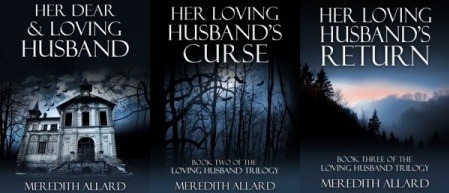
The vast majority of my sales have come from The Loving Husband Trilogy.
Sure, there are well-known authors who can sell that many books in a month, a week, a day, even, but for me, as an indie author who started almost out of nowhere, 50,000 works for me. I read somewhere that most indie books sell around 500 copies, so I have no complaints.
My journey into indie publishing is similar to other stories I’ve heard. I had written three historical novels between 1994 and 2007, and I had the same frustrations others do when trying to get published the traditional way. At one point I had an agent who turned out to be less than I hoped for. When I was close to a deal with a major publisher, she decided to switch gears and become a theatrical agent. Which is fine. Really. People change their minds about what careers they want every day. But she didn’t tell me she was no longer a literary agent. She just disappeared. Poof! Gone. It took several weeks to track her down to find out what had happened. God bless any actors who have this woman as their agent. Hopefully she carried through with their contracts before disappearing to become who-knows-what—a potato farmer in Idaho perhaps.
I had to start all over again searching for an agent. The hardest part about the rejection letters for me wasn’t the form letters. Those never bothered me. We send out form letters at Copperfield, so I understand it’s nothing personal. It just means the work isn’t right for that agent or editor for whatever reason. The hard ones to take were the letters that said, “I like your story and I can see your talent, but I don’t know who to sell this to.” What do I do with a comment like that? I would have rather received a form letter.
With my previous three novels, I became frustrated and ended up leaving them aside, never forgotten, but no longer actively pursued. But Her Dear & Loving Husband was different. I wasn’t willing to take no for an answer. I had a sense there was an audience for this book. Around this time (this was 2010-2011) I was reading a lot about the indie author revolution, and I was intrigued. I had previous experience with self-publishing through a pay-for-play company that was less than wonderful, so I was hesitant to go that route again. But self-publishing in 2011 was very different than it was in 2000, and the more I read about it the more I thought self-publishing was something I could do. After all, what’s the harm in trying?
Through my work with The Copperfield Review we created Copperfield Press, and two and a half years later I have six novels published, and between the six novels I have sold more than 50,000 copies and given away more than 100,000 copies. After I made that realization I decided I wanted to share how I’ve been navigating my way along the path of indie publishing. Some of my methods are tried and true, tested by indie authors who came before me. But I’ve always been one to march to the beat of my own drummer, and advice from others doesn’t always work for me.
Over the next few weeks I’ll be sharing what I’ve done (and what I haven’t done) as I’ve joined the indie publishing movement. I’m not an expert on indie publishing, and here’s the big secret that’s really no secret at all—no one is an expert in indie publishing. Indie publishing is one giant experiment, and the more indie authors understand that, the more enjoyable the process can be. I’ve stopped looking at the indie author’s journey as a chore, and I’m hoping I can help others do the same.
Filed under: Publishing, Writing Tagged: Indie Authors, indie publishing, selling e-books, The Loving Husband Trilogy

September 2, 2013
Her Dear & Loving Husband is on tour through October

Her Dear & Loving Husband is on tour from September 3rd until October 15th through Teddy Rose and her fabulous Premier VirtualAuthorBookTours.com. Stop by and say hello! Here are the tour dates and websites:
So Many Precious books Sept 3 Spotlight & Giveaway
VW Stitcher Sept 3 Review
Genuine Jenn Sept 4 Review
Book Snatch Sept 4 Interview & Giveaway
Crossroads Sept 5th Review
A Chick Who Reads Sept 6 Guest Post
Peeking Between the Pages Sept 9 Review & Giveaway
Books & Bindings Sept 10 Review
Books & Bindings Sept 10 Guest Post & Giveaway
Books, Books & More Books Sept 11 Review
Mom With a Kindle Sept 12 Review
In This World of Books Sept 13 Review & Giveaway
Mina Burrows Sept 13 Guest Post
From the TBR Pile Sept 16 Review
Every Free Chance Sept 16 Guest Post & Giveaway
Open Book Society Sept 17 Review
My Seryniti Sept 18 Review
Talk Supe Sept 19 Review
Talk Supe Sept 19 Interview & Giveaway
My Cozy Corner Sept 20 Review
Giveaways & Glitter Sept 23 Review & Giveaway
Saving for 6 Sept 24 Review
Manic Mama of 2 Sept 25 Review
No Wasted Ink Sept 25 Interview
Moonlight Lace & Mayhem Sept 26 Review
Moonlight Lace & Mayhem Sept 27 Guest Post & Giveaway
My Precious Sept 27 Review
Broken Teepee Sept 30 Review & Giveaway
Romance & Inspirations Oct. 1 Review
Faerie Tale Books Oct 2 Review
My Devotional Thoughts Oct 3 Review
My Devotional Thoughts Oct 4 Interview & Giveaway
Joy Story Oct 4 Review
My Self Confessions Oct 7 Review
My Self Confessions Oct 8 Guest Post
Rainy Days & Pajamas Oct 8 Review & Giveaway
New Age Mama Oct 9 Review
DWED Oct 10 Review
DWED Oct 11 Interview
Chic Book Chick Oct 11 Review
Sweeps4Bloggers Oct 12 Review & Giveaway
Literary Winner Oct 15 Review & Giveaway
Filed under: Her Dear & Loving Husband, News Tagged: Blog Tour, Her Dear & Loving Husband, Virtual Author Book Tours

August 26, 2013
When a Book Changes Your Life
“I don’t want to change anything, because I don’t know how to deal with change. I’m used to the way I am.”
From Paulo Coelho’s The Alchemist
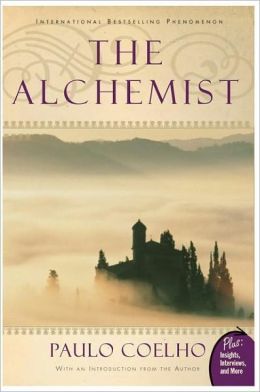 How often does a book change your life? I’m not talking about books you love so much you read them again and again. I’m not even talking about books that prompt you to think differently. I’m talking about books that cause you to do something, to take action. Just because I’ve loved a book doesn’t mean I make any changes in my day-to-day life after reading it. When I’m reading the book I’m engrossed in it, but then I close the covers and go back to my life, doing the same thing at the same time most days of the week, most weeks of the year.
How often does a book change your life? I’m not talking about books you love so much you read them again and again. I’m not even talking about books that prompt you to think differently. I’m talking about books that cause you to do something, to take action. Just because I’ve loved a book doesn’t mean I make any changes in my day-to-day life after reading it. When I’m reading the book I’m engrossed in it, but then I close the covers and go back to my life, doing the same thing at the same time most days of the week, most weeks of the year.
About a year ago I read The Alchemist by Paulo Coelho when it was one of the books available for a literature class I was teaching. The books in the textbook room were brand new, as in no one else had used them. The pages were crisp, the covers unmarked, but that didn’t deter me. When I read the book I fell in love with the simple yet profound message of finding the power of dreams and staying true to your destiny. The Alchemist is a parable about how what you’re looking for is already within you (think Glinda the Good Witch telling Dorothy she’s always had the power within her—only without the sparkly red slippers). It’s the story of Santiago, the young Andalusian shepherd who has always wanted to travel and ends up on a journey of self-discovery:
“My heart is afraid that it will have to suffer,” the boy (Santiago) told the Alchemist one night as they looked up at the moonless sky.
“Tell your heart that the fear of suffering is worse than the suffering itself. And that no heart has ever suffered when it goes in search of its dreams.”
Of all the characters in The Alchemist, the one I most related to (as I would guess most people do) is the crystal merchant. Santiago is stranded after his money is stolen, and he goes to work for the crystal merchant, who treats Santiago with kindness. Though the merchant is afraid of change, he takes Santiago’s advice and makes changes to his crystal shop. Because of Santiago’s ideas, the crystal shop thrives. The crystal merchant has dreams of travel like Santiago, but he’s full of excuses. He reminds me of that complaining relative everyone has—I can’t do this because… I can’t do that since… You think you’re not feeling well? Let me tell you about not feeling well… Like many of us, the merchant hides his heart’s desire behind worries. He can’t go to Mecca because… It’s not a good idea since… The crystal merchant fears that if he does finally go to Mecca he’ll have nothing else to look forward to.

The view from the Globe Theater in London.
I wasn’t dreaming of Mecca, but I had been wanting to visit London for more than a decade. As a student of English literature, a trip to England seemed somehow necessary. But, like the crystal merchant, I made excuses. England, especially London, is too expensive. It’s too far. I don’t like flying. England is an entirely different country! How would I know what to do or where to go in another country? I didn’t have a passport. Don’t they use different money there? Oh, did I mention how expensive England, especially London, is? But after reading about Santiago’s journey of self-discovery—how he achieved his dreams despite the obstacles—I realized how flimsy a lot of the crystal merchant’s excuses sounded. And if the crystal merchant’s excuses were flimsy, and I made the same excuses, then I’m not any better than the crystal merchant.
I began examining my excuses about not visiting England one by one to see what, if any, validity they had. Here’s what I found:
1. England, especially London, is definitely expensive, but the truth is I had the money. I’ve been fortunate enough to have sold a fair number of books and I had money set aside. When I looked into airfare, hotel, and the cost of meals and attractions, I had to cross too expensive off my list because it wasn’t true—I could afford it.
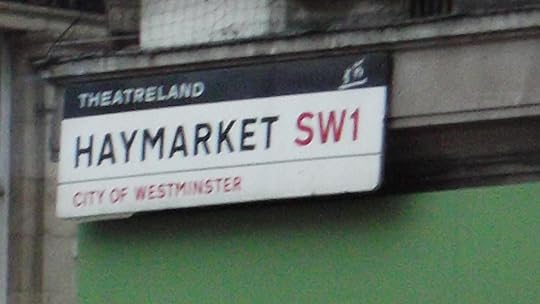
Haymarket in London
2. London is far from Las Vegas, Nevada, 5235 miles to be exact, which is ten hours airplane time. True, I don’t like to fly, but I had already discovered that just because I don’t like to fly doesn’t mean I can’t. Whenever I do travel by plane I get an aisle seat and pretend I’m on a bus or a train. And it’s not like I have to know how to work the controls in the cockpit. I just have to sit there. I didn’t want to be one of those people who are so afraid of flying they never go anywhere. I had been that way for a while, but there are places I want to go so I had to get over my fears. Not wanting to fly ten hours was no longer an excuse.
3. It’s true that England is a different country thanks to that little squabble called the American Revolution circa 1776. I often think of that quote from George Bernard Shaw: “England and America are two countries separated by a common language.” But they do speak English in England, English an American can understand, even, and from reading so much British literature and watching so much British television I like to think I speak conversational British English. So yes, England is a different country, but since I wouldn’t have trouble communicating with anyone that wasn’t an excuse—at least not a good one.
4. No passport? Seriously? Two filled-out forms, two hours in the post office, one bad photograph, and $150 later the lack of a passport was no longer an issue. They do use different money in England, but a trip to the ATM gave me a few hundred dollars, which the nice man at my bank exchanged for ten British pounds (that’s an exaggeration, but not by much).

Regent Street in London
I realized I didn’t want to look back and know I missed my chance to go to London. I booked my flight and hotel room, I bought a few tourist guides, signed up on Rick Steves’ travel website, and a few months later I was there, in London, seeing places I had dreamed of for years. I wasn’t disappointed when I got there the way the crystal merchant expected he would be disappointed. I loved being in London. It’s a truly international city and an easy place to visit for tourists who haven’t been there before. I even went to Paris. Despite my French surname, I don’t speak a word of French (American English and conversational British English are as far as I go), but I managed to get around and back to the airport on time and in one piece. In other words, my trip wasn’t a colossal failure as the crystal merchant thought his journey would be. It was a joy, and I’m already making plans to visit again next summer.
I wouldn’t have visited London if I hadn’t read The Alchemist. Goes to show how inspiration to follow your dreams can come from anywhere—even an unused stack of books in the textbook room.
Filed under: Spirituality Tagged: London, Paulo Coelho, The Alchemist, traveling

August 15, 2013
Book Review: Quiet by Susan Cain
I don’t usually post book reviews here (you can find my reviews on The Copperfield Review and Goodreads), but I particularly loved this book so I thought I’d share it.
* * * * *
Quiet: The Power of Introverts in a World That Can’t Stop Talking
Written by Susan Cain
Published by Broadway Books

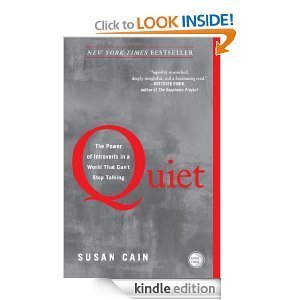 After I read Quiet, I wanted to shout ‘I’m an introvert!’ from the tallest building, but then the buildings around here aren’t very tall and I’m an introvert so I wouldn’t have shouted very loudly anyway. The shout would have been a whimper, and then I would have been upset with myself for not yelling louder. After a sigh, I gave up on the idea and went back into my house where I could be alone, which is where I wanted to be in the first place.
After I read Quiet, I wanted to shout ‘I’m an introvert!’ from the tallest building, but then the buildings around here aren’t very tall and I’m an introvert so I wouldn’t have shouted very loudly anyway. The shout would have been a whimper, and then I would have been upset with myself for not yelling louder. After a sigh, I gave up on the idea and went back into my house where I could be alone, which is where I wanted to be in the first place.
I had heard the terms ‘introvert’ and ‘extrovert’ many times over the years, and I understood that along those lines I fell on the introvert side of the spectrum. Like most writers, I’d rather be home behind my computer screen writing stories, blog posts, or reviews like these than doing almost anything else. In regards to degrees of introversion, I am in extremis. I’m not dying from introversion, mind you, but I’m so far there that if you pushed me I’d drop away never to be seen or heard from again.
In Quiet, Susan Cain pleads the case for introverts like myself by using examples and research, and she shows how introverts have made many contributions to society in areas like technology and entertainment. She points out what is obvious but should be stated in a book about introverts: we live in a society where extroversion is idealized and rewarded whereas introversion is discouraged and not rewarded. Cain points to the current trend toward group or cooperative work, and then she says something I’ve been longing to hear for 20 years: group work is inherently difficult for introverts. I know this is true from frequent workshops where the directions are “Turn to your neighbor and say…” or “Form a group of four and create a…” I’m not an unfriendly person, truly. But, as Cain points out, introverts cannot think on demand. Group leaders who are trying to teach are doing an injustice to introverts by insisting that their lessons consist of talking it out. Like other introverts, I don’t learn by talking, especially to strangers. I learn by figuring it out for myself. I realized in grad school as we sat around the table discussing great works of literature that I didn’t know how to insert myself into the conversation, and the thought that I should interject somehow left me more stressed than I already was.
Each page of Quiet was an “A ha!” moment for me. One of the biggest lessons I learned is that the societal push toward extroversion isn’t always a good thing. It turns out that 1/3 of people are introverts, people like me who would rather read or write than go to parties or speak out about anything anywhere. When Cain talks about how introverts need time to recharge because being in the world can drain their energy, my heart swelled—in a good way. Here Cain describes what I have always known about myself but never had the words to articulate. For my entire life I thought I was just weird. I’m not saying I’m not weird, I’m just saying I’m weird for other reasons. Why I chose the careers I did, why I live my life as I do—it all makes sense to me in a way it didn’t before I read Quiet. I had spent most of my life feeling bad about myself, feeling like I should force myself to be more social, but this book helped me realize that if I get my jollies staying home and working around the house, that’s okay. I still need to function in the world, but I can take the time I need to recharge.
Introverts will always have to deal with the negatives—being considered anti-social, being told to smile more, listening to the comments after you stay in your office because you need to recharge instead of going out for a noisy lunch with coworkers. Reading Quiet gave me the ability to say, “I don’t have to be like them. I can be myself.” What better gift can a book give?
If you’re an introvert, or you’re in a close relationship with one, you will want to read Quiet for its perceptive insights about being an introvert in an extroverted society.
Filed under: Book Reviews Tagged: book reviews, introverts, Quiet, Susan Cain

August 12, 2013
Her Dear & Loving Husband is Now on Tour…with Giveaways!

Her Dear & Loving Husband, Book One in the Loving Husband Trilogy, is now on tour through BestChickLit. Below are the tour dates and links to the websites. Please stop by and say hello! There are also some great prizes to win. If you’re in the Massachusetts area, or you’ll be traveling there, check out the giveaway for dinner for two at Adriatic Restaurant and Bar, in Salem, MA.
Stop 1 on August 12th – BestChickLit
Stop 2 on August 13th – The Gutter Girls
http://www.guttergirlsbookreviews.com/?zx=a3fc560b4c0b9daa
Stop 3 on August 14th – Book Junkie: Not-So-Anonymous
http://ashleythebookjunkie.blogspot.co.uk
Stop 4 on August 15th – Victoria Loves Books
https://victorialovesbooks.wordpress.com
Stop 5 on August 16th – Make My Day Books
http://makemydaybooks.blogspot.co.uk
Stop 6 on August 19th – Old Victorian Quill
http://oldvictorianquill.wordpress.com
Stop 7 on August 21st – Sheli Reads
http://shelireads.wordpress.com
Stop 8 on August 23rd – A Reading Nurse
http://areadingnurse.blogspot.co.uk
Stop 9 on August 26th – Blue Harvest Creative
https://blueharvestcreative.wordpress.com
Stop 10 on August 27th – Cosmochicklitan
https://cosmochicklitan.wordpress.com
Giveaways:
Giveaway 1:
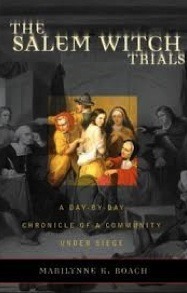
Paperback copy of the nonfiction book The Salem Witch Trials: A Day by Day Chronicles of a Community Under Siege by Marilynne K. Roach–an important book for my research about the Salem Witch Trials.
Giveaway 2:

Dinner for 2 people at Adriatic Restaurant and Bar, Salem, MA–the setting for the Loving Husband Trilogy and a wonderful place to visit.
Click on the links of the hosts on the day of my tour stop to enter the giveaways. Good luck!
Filed under: Giveaways, Her Dear & Loving Husband, News Tagged: Adriatic Restaurant and Bar, BestChickLit, Blog Tours, Giveaways, Her Dear & Loving Husband, Massachusetts, Salem, Salem Witch Trials




